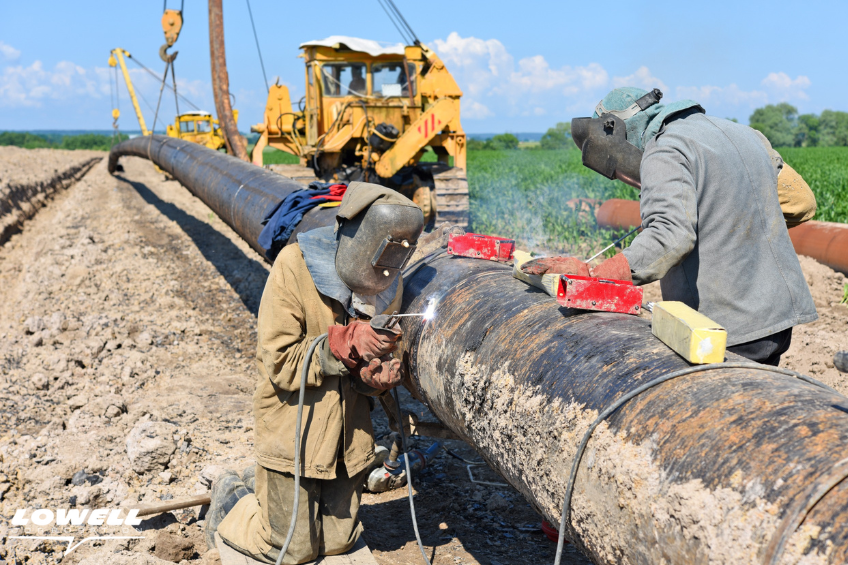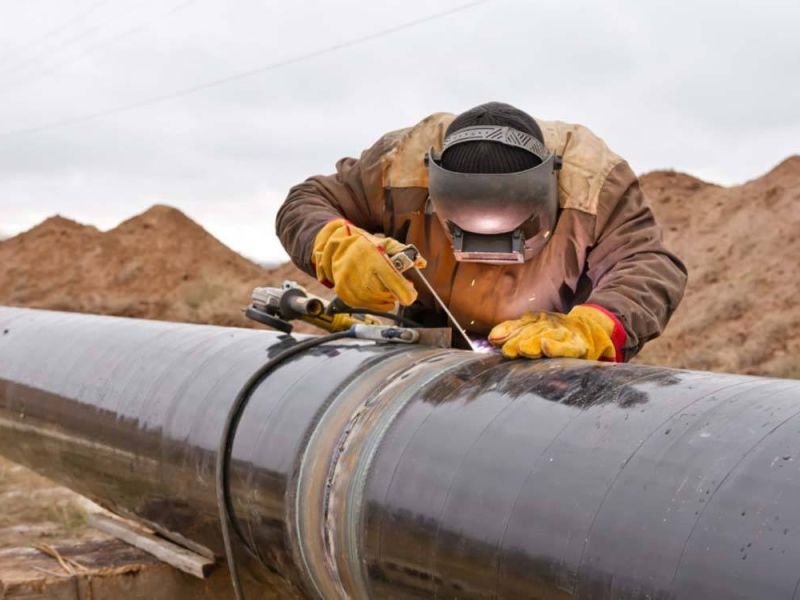Why Creek Pipe Company Is Pioneering Eco-Friendly Pipeline Materials
Wiki Article
Unveiling the current Innovations in Pipelines for Effective Water Monitoring
The evolution of pipeline innovation is improving water administration methods. Recent developments, particularly in wise sensing unit modern technology and leakage detection systems, guarantee enhanced performance and sustainability. These developments enable real-time tracking and predictive maintenance, dealing with important water challenges. As areas venture for durability, the role of green materials comes to be progressively substantial - Creek Pipe Company. What various other breakthroughs are on the horizon that could even more transform our method to water source administration?Improvements in Smart Sensor Modern Technology
As water administration systems become significantly complex, developments in clever sensing unit innovation play a crucial role in enhancing effectiveness and sustainability. These sensors make it possible for real-time tracking of water quality, flow prices, and stress degrees, supplying important information for efficient management. By incorporating Web of Things (IoT) capacities, wise sensors promote remote gain access to and data analytics, allowing operators to make educated decisions swiftly.Moreover, predictive maintenance comes to be feasible through using sophisticated algorithms that examine sensing unit data to forecast potential failures prior to they take place. This positive technique decreases downtime and reduces fixing prices. Additionally, smart sensing units add to the conservation of water sources by spotting leakages and abnormalities in the system, guaranteeing prompt action is taken to mitigate waste. Overall, the execution of wise sensor technology in water administration pipes marks a significant step towards optimizing resource use and advertising ecological sustainability.Eco-Friendly Materials for Lasting Pipelines
Innovative techniques in water management pipes increasingly integrate eco-friendly materials to boost sustainability. These products objective to reduce ecological influence while keeping longevity and effectiveness. Biodegradable plastics, for instance, are gaining grip as practical options to traditional PVC, minimizing long-term waste in garbage dumps. In addition, recycled materials, such as recovered rubber and steel composites, are being used to produce robust pipeline systems that significantly lower carbon footprints.Moreover, bio-based products stemmed from eco-friendly sources are becoming promising choices, providing both strength and lowered dependence on fossil fuels. Producers are additionally checking out ingenious finishes that improve deterioration resistance while remaining environmentally benign. These advancements not just advertise a circular economy yet additionally straighten with global sustainability objectives. As water scarcity comes to be a pushing issue, the adoption of green materials in pipeline building and construction represents a crucial action towards liable water administration and source conservation.Real-Time Tracking and Information Analytics
While standard water management systems usually rely upon periodic analyses, the integration of real-time surveillance and data analytics has actually changed the landscape of pipeline monitoring. This cutting-edge method enables operators to continuously track water top quality, stress, and circulation, assisting in instant actions to potential issues - Creek Pipe Texas. By leveraging innovative sensors and IoT innovation, information is accumulated and examined instantaneously, providing actionable insights that enhance decision-making processes.Real-time analytics not only enhances operational effectiveness but likewise helps in source allocation, guaranteeing that water circulation is enhanced. Anticipating analytics can anticipate need patterns, permitting aggressive measures to be applied, thus reducing waste and improving sustainability initiatives. The capability to imagine information via control panels help in determining fads and anomalies, which is important for maintaining the stability of water supply systems. Subsequently, this shift in the direction of real-time surveillance represents a considerable innovation in making certain the effectiveness and sustainability of water administration pipesDevelopments in Leakage Detection Equipments
The surge of real-time surveillance has actually led the way for advancements in leak detection systems within water monitoring pipelines. Modern innovations, including acoustic sensing units and fiber optic cables, make it possible for operators to recognize leaks with unmatched precision. Acoustic sensors, as an example, discover acoustic waves produced by getting away water, enabling immediate location pinpointing. On the other hand, fiber optic systems use temperature changes along the pipe to disclose anomalies indicative of leaks.Additionally, equipment discovering algorithms are being used to examine data accumulated from these sensing units, improving anticipating maintenance capacities. By processing historic data and determining patterns, these systems can forecast prospective leak locations prior to they occur, decreasing water loss and decreasing fixing costs.Furthermore, integration with geographical information systems (GIS) enables far better visualization and management of pipe networks, simplifying the action to detected leaks. Jointly, these technologies signify a transformative change in just how water management systems attend to leakage detection.Enhanced Toughness and Longevity of Pipe Products
Innovations in pipeline products are greatly boosting the resilience and durability of water monitoring systems. Cutting-edge products, such as high-density polyethylene (HDPE) and enhanced concrete, are proving to be extra immune to corrosion, stress, and ecological stressors. These modern materials not only extend the lifespan of pipes yet likewise minimize upkeep expenses and the frequency of repairs.Additionally, improvements in composite materials, which integrate different compounds to optimize efficiency, are being utilized for their premium strength-to-weight proportion and adaptability. This allows pipelines to much better endure severe weather and ground movements.Moreover, the introduction of safety coatings better boosts the strength of pipelines versus chemical destruction and physical wear. Because of this, water monitoring systems are coming to be extra trusted and lasting, guaranteeing the reliable shipment of water resources while decreasing the ecological impact associated with regular pipeline substitutes.Combination of IoT in Water Distribution Networks
As water distribution networks develop, the combination of the Internet of Things (IoT) is transforming the way water sources are handled and checked. Smart sensing units and linked tools make it possible for real-time data collection on water stress, flow, and high quality, facilitating positive administration of infrastructure. This advancement permits prompt detection of leakages and abnormalities, lessening water loss and lowering operational costs.Furthermore, IoT technology supports anticipating maintenance by analyzing use patterns, which assists utilities prepare fixings and upgrades a lot more properly. Boosted interaction in between devices assurances smooth information transmission, permitting for improved decision-making based on exact, up-to-date information.Additionally, the assimilation of IoT promotes water conservation efforts by providing customers with understandings into their intake practices, motivating more liable usage. Generally, the IoT changes water distribution networks, promoting effectiveness and sustainability in water management methods.Situation Studies: Success Stories in Water Monitoring Solutions
Creek Pipe Company Countless districts and organizations have successfully applied cutting-edge water management remedies, showcasing the efficiency of modern innovations in addressing water shortage and circulation obstacles. One significant example is the city of San Diego, which integrated advanced metering infrastructure (AMI) to keep an eye on water use in real-time, leading to a 10% reduction in consumption. Creek Pipe Texas. Similarly, the water authority in Cape Town adopted a wise leak discovery system that identified and repaired leaks swiftly, significantly decreasing water loss during the extreme dry spell of 2017. In Australia, the usage of recycled water systems in city locations has actually shown effective, permitting for lasting watering techniques and lowered need on potable water resources. These study highlight that by leveraging innovation and innovative techniques, communities can enhance their water management approaches, making sure lasting sustainability and durability despite growing water difficultiesOften Asked Inquiries
Exactly how Do These Technologies Influence Water Energy Costs?
The advancements in pipe technology considerably reduce water loss and operational inefficiencies. Consequently, water utilities experience decreased upkeep and production prices, eventually resulting in lower expenses for customers and enhanced sustainability in water monitoring techniques.What Are the Environmental Influences of Pipe Installation?
The ecological influences of pipeline installation can consist of environment disturbance, dirt erosion, and prospective water contamination. Modern-day strategies intend to minimize these impacts, advertising lasting methods in building and construction and long-lasting ecological conservation.
Exist Government Laws Affecting Pipeline Innovations?

Government laws significantly influence pipe technologies, mandating compliance with ecological standards and security protocols. These policies aim to alleviate eco-friendly dangers while advertising innovations in modern technology, ultimately forming the future of pipeline framework and water monitoring techniques.

How Can Consumers Advantage From These Pipeline Improvements?
Customers can profit from these pipeline advancements with improved water quality, decreased costs, improved reliability, and boosted access to clean water. Developments bring about more efficient resource monitoring, inevitably cultivating sustainable practices within areas.What Future Trends Can We Anticipate in Water Administration Pipelines?
Future fads in water management pipes may consist of enhanced automation, smart monitoring technologies, and sustainable products. These technologies aim to improve efficiency, minimize leaks, and boost overall water top quality, making certain source conservation for future generations. As water circulation networks advance, the assimilation of the Net of Points (IoT) is changing the way water sources are taken care of and checked. Many towns and companies have effectively applied innovative water administration services, showcasing the effectiveness of contemporary innovations in dealing with water deficiency and circulation difficulties. The water authority in Cape Town adopted a wise leak discovery system that determined and fixed leaks rapidly, significantly lessening water loss throughout the severe drought of 2017. In Australia, the use of recycled water systems in urban locations has actually proven successful, allowing for lasting watering techniques and lowered need on drinkable water resources. Consumers can benefit from these pipe developments via enhanced water quality, decreased costs, improved dependability, and increased access to tidy water.Report this wiki page